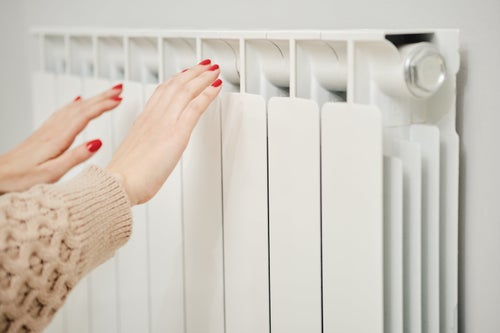

Although it might sound boring as hell, bleeding your radiators can actually save you a packet on your energy bills.
Why? Because an unbled radiator doesn’t distribute heat correctly, meaning you could be turning your heating on and not even having your room heated up properly.
Simply put, bleeding your radiator releases any air trapped within it and makes it heat your room better – fortunately energy experts at boiler company Boxt have shared everything we need to know about how to bleed our radiators ourselves.
Andy Kerr, founder of Boxt, said: “Bleeding your radiators can help you to achieve a more efficient and environmentally-friendly home.”
Signs your radiator needs bleeding
It’s time to bleed your radiator if:
- There are damp patches or condensation above your radiator or surrounding it
- It’s cold to the touch at the top
- It makes funny noises when it starts heating up
How to bleed your radiator
Turn your boiler on and allow plenty of time for your radiators to heat up – this way you can tell which of your radiators need bled.
Using the signs above, identify which need bled – once you’ve sussed which you need to take care of, turn your heating off and let the radiators cool down completely.
Do not try to bleed them while they’re on or still hot as you could end up seriously hurting yourself with the hot air you release from them.
With your radiators thoroughly cooled down, grab some kitchen roll or an old towel, as well as a bowl or container to catch any drips.
Twist your radiator key anti-clockwise to open the valve – if you don’t have one you can buy them from most DIY stores for as little as £2. If it’s stiff and difficult to twist, put a cloth over it to help your grasp it or try wearing a pair of thick gloves.
Don’t open the valve completely (or for too long), but as you twist it you should hear the ‘hiss’ of air escaping.
Wait until the sound has stopped and water steadily begins to leak from your radiator – close the valve and wipe up any excess water.
If your bleeding has been successful, it should show on your boiler’s pressure.
Experts at Boxt explain: “It’s normal for your pressure to decrease slightly after radiator bleeding. However, for reference, it should be around 1.0-1.5 bars when switched off and can rise to around 2 bars when switched on.
“If your boiler pressure appears fine, it’s time for a ‘heat test’. Boot up your central heating and have another feel of your radiators. All being well, there should be no more cold patches, meaning you and your family can feel the full benefits of a warm home and save some cash on your bills – it’s a win-win situation.”